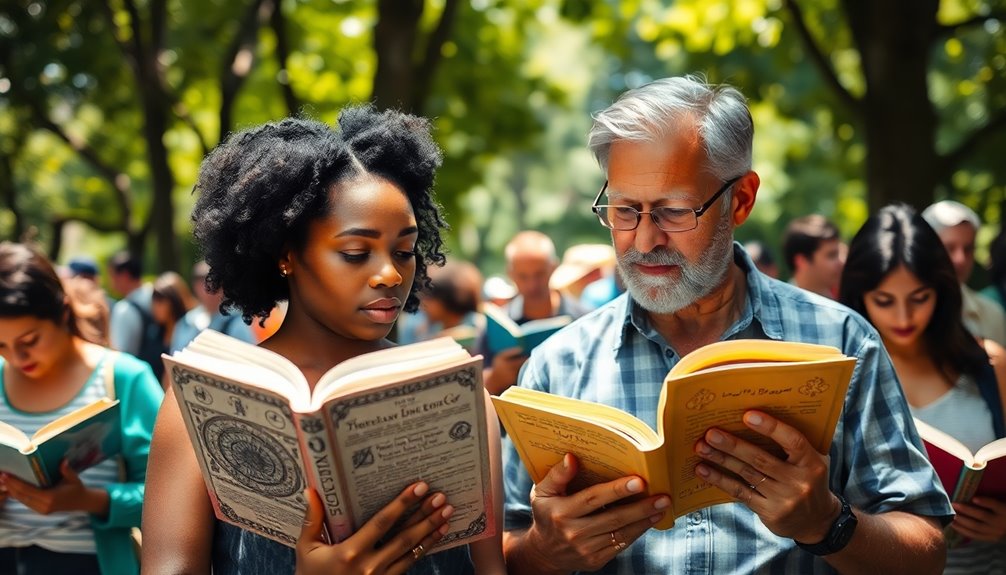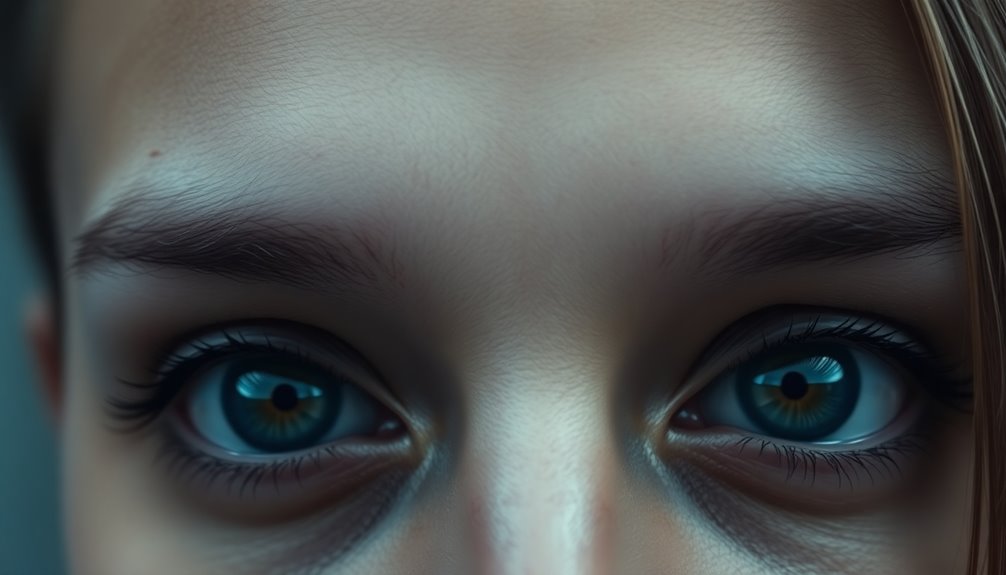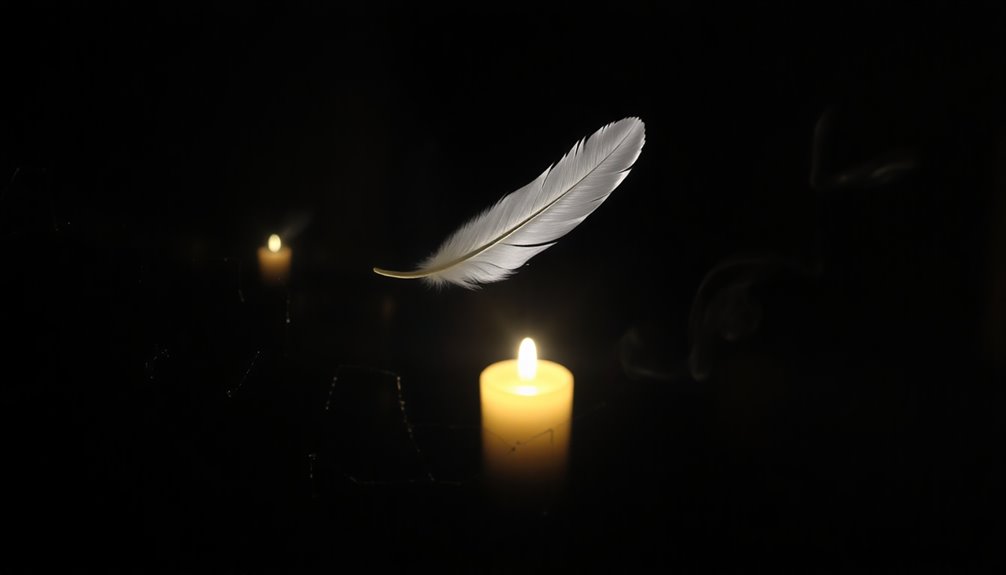Yes, authors often use symbolism intentionally! They do this to create deeper meanings in their stories. For example, Joseph Heller's symbols come from his careful thoughts, while some authors, like Jack Kerouac, feel they don't plan symbols at all. It can be exciting to discover these symbols because they often mean different things to different readers. This happens because your personal experiences and the cultural background you have can change how you see them. Exploring these ideas can lead to fun discussions, and you might discover even more fascinating insights along the way!
Key Takeaways
- Some authors, like Joseph Heller, consciously incorporate symbols to convey specific meanings in their works.
- Other authors, such as Jack Kerouac, deny using symbolism intentionally, believing it emerges organically during the writing process.
- Surveys, like Bruce McAllister's, reveal a wide range of perspectives on authorial intent regarding symbolism among writers.
- Reader interpretations of symbols can differ significantly from the author's original intent, fostering rich literary discussions.
- Cultural and historical contexts significantly influence how symbols are understood and interpreted by readers.
The Nature of Symbolism

Symbolism serves as a powerful tool in literature, allowing authors to convey deeper meanings within their narratives. You might notice that some writers intentionally choose symbols to represent key themes and ideas. For example, Joseph Heller often used symbolism on purpose in his stories.
On the other hand, you could find that some authors, like Ray Bradbury, discover symbols subconsciously as they write. This natural emergence of symbols can surprise both the writer and the reader!
A survey by Bruce McAllister shows that authors have different views on symbolism. Some deny it exists, while others recognize its importance. Think about John Updike and Ralph Ellison, who believe that symbols can be complex. They suggest that while some writers craft symbols with intention, others might stumble upon them as they create. The integration of AI in mobile devices is also reshaping how stories are told, allowing for more innovative approaches to symbolism. Additionally, authors often draw on decentralized ideas from various influences, enriching their narratives with multifaceted symbols.
The beauty of symbolism lies in its ability to connect with readers differently. Your interpretation of a symbol might vary from someone else's, based on your personal experiences and cultural background.
This rich interplay between authors and readers makes each story unique and exciting, inviting you to explore the deeper meanings hidden within the words.
Authorial Intent and Interpretation

Writers often have varied intentions when incorporating symbols into their works, which can lead to a fascinating exploration of meaning. Some authors, like Joseph Heller, use symbolism consciously to enhance their stories, while others, such as Jack Kerouac, may deny even thinking about symbols. This shows a wide range of authorial intent in literature.
In fact, a survey by Bruce McAllister revealed that some authors create symbols on purpose, while others let them emerge subconsciously as they write. Ralph Ellison called us "symbol-making beings," suggesting that symbols can be both intentional and organic.
However, it's important to remember that authorial intent doesn't always dictate how readers interpret symbols. Critics and readers might see meaning in symbols that the author never intended. This gap invites exciting discussions in literary criticism.
You might wonder how much weight should be given to an author's explanations. It's a delightful puzzle! Understanding the mix of authorial intent and reader interpretation can deepen your appreciation of literature.
Diverse Reader Perspectives

Through the lens of personal experience and cultural background, readers often uncover diverse interpretations of symbols in literature. The best symbolism is always open to different meanings, which allows you to connect with a story in your own way.
Some authors, like Joseph Heller, intentionally rely on symbolism, crafting symbols that carry specific meanings. Others may leave it up to you, the reader, to interpret what those symbols mean.
When you read, you might become aware of how your background shapes what you see in the text. Ralph Ellison understood that while some interpretations fit his intent, others might stray far from it. This diversity of perspectives makes literature exciting!
Research shows that opinions about symbolism vary widely among authors. Some create symbols on purpose, while others do so without even realizing it. Your unique viewpoint is valuable.
Engaging with these symbols can spark discussions with friends and family, revealing even more interpretations. Remember, questions don't make you less of a reader. Instead, they show your curiosity and enthusiasm to understand.
Cultural and Historical Contexts

In literature, cultural and historical contexts shape how symbols are understood and interpreted. You see, cultural symbols can mean very different things in different societies. This diversity influences authors as they weave symbolism in their writing. Historical events also play a big role, changing what symbols mean over time.
Here are some key points to reflect upon:
- Cultural Symbols: They carry unique meanings based on values and beliefs of a society.
- Historical Events: These events can alter the significance of symbols, reflecting the norms of their time.
- Interpretation of Symbols: Your personal background affects how you understand symbols in a story.
- Authorial Intent: Knowing the author's context helps you grasp their intended meaning behind symbols.
Understanding these points can deepen your literary analysis. You'll realize that symbols aren't just random; they resonate with the world around them.
When you recognize the evolving nature of symbols, you appreciate the layers in a story. So, when you read, think about how cultural and historical backgrounds shape what you see in the text. It's a fun way to explore literature!
Survey Insights From Authors

Exploring how symbols function in literature leads to fascinating insights from authors themselves. In 1963, Bruce McAllister surveyed 150 authors about their use of intentional symbolism. He received 75 responses, showcasing a variety of perspectives.
Some authors, like Joseph Heller, recognized intentional symbolism but believed its role in their works was limited. Others, like Jack Kerouac, pushed back, feeling that conscious symbolism wasn't a part of their writing process at all.
On the flip side, Isaac Asimov shared an interesting thought. He said that unconscious symbolism is hard to avoid. Sometimes, authors don't even realize the symbols they're including! This highlights the big difference in how authors view symbolism. Some think they can create symbols on purpose, while others feel these symbols appear naturally while writing.
This survey shows that the world of symbolism is rich and varied. Each author brings their own thoughts and feelings into their work, making it special.
Frequently Asked Questions
Why Do Authors Put Symbols in Their Books?
Authors put symbols in their books to make their stories more exciting and meaningful.
These symbols can represent big ideas or emotions, helping you connect with the characters and their journeys. For example, a flower might show hope, while a storm could mean trouble.
By using symbols, authors invite you to think deeply about the story, sparking your imagination and making reading an adventure.
It's like finding hidden treasures in their words!
Is Symbolism in Books Intentional?
Symbolism in books can be like hidden treasure waiting to be discovered!
Some authors sprinkle symbols intentionally, crafting each one with care. Others let symbols pop up naturally, almost like surprises in a game.
So, when you read, it's exciting to think about whether a symbol was planned or just found along the way.
Either way, these symbols add depth and spark imagination, making the story even more fun to explore!
Can Symbolism Be Unintentional?
Absolutely, symbolism can be unintentional! Sometimes, when you write, your ideas flow naturally, and deep meanings appear without you even noticing.
Authors might create a story that touches on big themes, like friendship or bravery, without trying to add symbols. It's exciting how readers can discover these hidden meanings!
This surprise connection between the text and its audience makes reading even more fun. So, keep exploring those stories—you might find unexpected treasures!
Do Authors Use Symbolism on Purpose?
When you read a story, you might notice symbols that seem important. Some authors do use symbols on purpose to add deeper meaning. They want you to think and feel more about their characters and themes.
However, not every symbol is planned. Sometimes, authors discover symbols as they write! This makes reading exciting because you can find different meanings and connections.
Conclusion
To sum up, authors often use symbolism to spark deeper thoughts and feelings. By weaving symbols into their stories, they create connections that can surprise and delight readers like you! Remember, each person might see a symbol in a unique way, bringing their own experiences to the tale. So, next time you read, look for those hidden meanings and enjoy the journey of discovery. Symbolism makes storytelling special, shining a light on the magic within the words!











